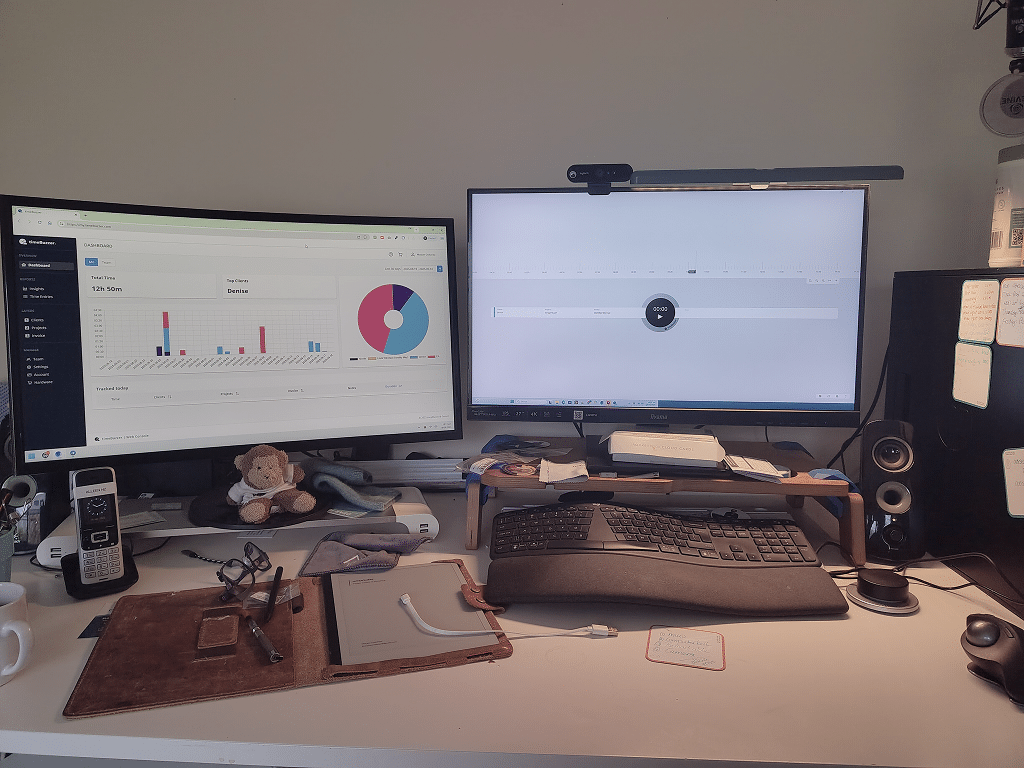In this case study, we asked Marjan Crabtree what changed for her after switching to timeBuzzer – and what tips she has for you.
What do you do and why do you track your time?
I’m Marjan Crabtree, a Strategic Fixer. I help entrepreneurs sharpen their website story — the through-line that makes an entire site work as one clear narrative. When the message, the flow, and the tech align, visitors don’t just browse — they buy.
Precise time tracking is part of the same principle: clarity. If I don’t know where my hours go, I can’t measure the real cost or value of my work. Having hard data behind my projects means I can quote better, bill fairly, and make decisions that actually move results.
What has improved since using timeBuzzer?
Before timeBuzzer, I kept telling myself “I’ll log it later”… and of course, later never came. The hardware button cut that excuse. One press = timer on. Another press = timer off. Done.
The biggest shift: my proposals and invoices have improved because I finally have accurate data. I don’t lose those “hidden” hours anymore. That means less guilt, more transparency, and better decisions about where to focus.
What tips do you have for others?
Keep it simple. Put the button where you can’t ignore it, and just start pressing it. Don’t overthink the layers — you’ll refine them as you go.
For example, I organize by Client → Project → Invoice. That way, I can book time against specific invoices and clearly see where the time went.
It’s not a surveillance tool — it’s a memory aid. Within a week, it became second nature. Now I don’t want to work without it.

